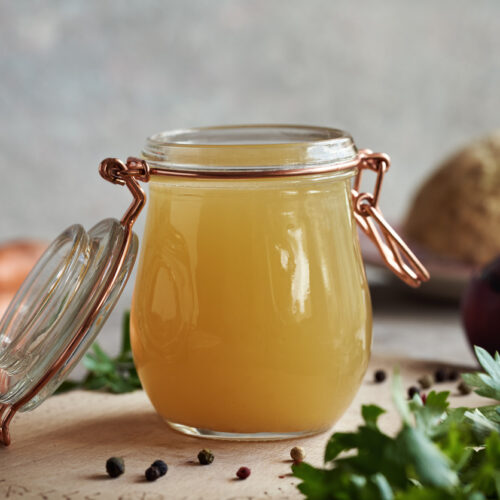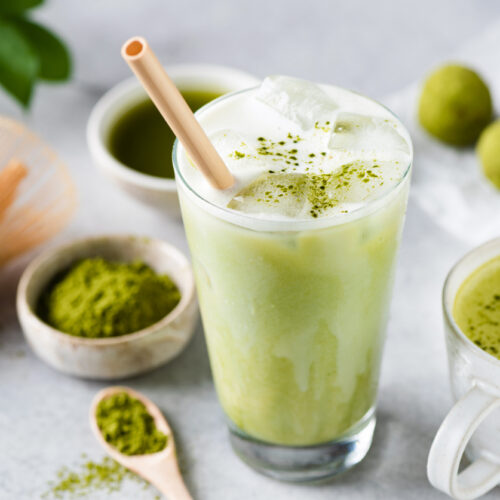
Is sauerkraut actually low FODMAP?
The surprising answer is no it’s high FODMAP! While fermented foods might be good for our gut bacteria, some types could cause gastrointestinal distress for FODMAPers! Sauerkraut, made from common cabbage, is high FODMAP. But fermented red cabbage might be better tolerated in small serves. Find out more below.
What is sauerkraut?
Sauerkraut is finely cut cabbage that has been fermented by lactic acid bacteria. It has a distinctly sour flavour and it contains no other ingredients except for cabbage and brine.
Why do people eat fermented cabbage?
Sauerkraut and other fermented foods contain probiotics, which are beneficial bacteria that can help replenish the supply of good bacteria in your gut. Fermented cabbage is also high in soluble fibre (a type of prebiotic), which can help relieve both constipation and diarrhea. Finally, sauerkraut is high in both vitamins C and K, and the lactic acid helps increase iron absorption. These benefits sound pretty good…so why is sauerkraut a problem for FODMAPers?
Sauerkraut made from white cabbage (high FODMAP)
Monash University recently tested German sauerkraut made from white cabbage and found it is high FODMAP for mannitol, at a ½ cup serve. The largest serve you can safely enjoy is 1 tablespoon, which isn’t going to go very far in your sandwich!
But hang on a second… I bet you are wondering how sauerkraut can be high FODMAP if common cabbage is low FODMAP? Well sauerkraut is made using lactic acid fermentation, which is when naturally occurring lactobacilli bacteria, and other lactic acid bacteria, ferment the cabbage. When these bacteria start fermenting the cabbage they rapidly break down its fructose and convert it into mannitol. This is why traditional sauerkraut, made from white cabbage, is high FODMAP for mannitol and normal cabbage is low FODMAP.
What about kimchi?
Kimchi can also be made from fermented white cabbage and often contains other ingredients such as hot Korean chilli pepper, garlic, and fermented fish. Although Monash University hasn’t tested kimchi, other research papers indicate the same fructose reaction occurs (like in sauerkraut), and that kimchi could contain high levels of mannitol.
This means if you want to try kimchi start with a small serve (less than 1 tablespoon) and test your tolerance levels.
Fermented purple cabbage (low to moderate FODMAP)
Don’t worry you can still enjoy some fermented cabbage on the low FODMAP diet. Different cabbages have different carbohydrate compositions and ferment in different ways. It appears that sauerkraut made from purple cabbage might be better tolerated. Monash University have tested fermented red cabbage and found it is low FODMAP in ½ cup serves, but it does contain moderate amounts of fructans at a 1 cup serve.
Final thoughts
It is possible to enjoy fermented cabbage on the low FODMAP diet, but you need to be careful in your selection. Choose fermented red cabbage as it is lower in FODMAPs, and avoid traditional sauerkraut made from white cabbage which is high FODMAP for mannitol.
Please note: If you want more information on going low FODMAP please see our FODMAP toolkit: Your complete guide to going low-FODMAP. Full print ready version available for purchase, details here.
You may also be interested in:
- What nuts are low-fodmap?
- What flours and starches are low-fodmap?
- What cheeses are low-fodmap, low lactose?
- Is apple cider vinegar low-fodmap?
- Fodmap content of milk and milk alternatives
- Are cranberries low-fodmap?
- Garlic and a low-fodmap diet
Please also see our articles; is the low-fodmaps diet right for you and our Fodmaps toolkit which is your complete guide to going low-fodmap.
Here’s some delicious low-fodmap recipe ideas:
Low-fodmap spaghetti bolognese
Low-fodmap seared steak with mustard sauce
All our low-fodmap recipes, plus more low-fodmap options
Article sources and references
- Monash University App. Food Guide. The Monash University Low FODMAP Diet App. 2016: Version 1.6.1(305)
- Busch, S. What Are the Health Benefits of Sauerkraut?. Livestrong. 2014-01-18.https://www.livestrong.com/article/374784-what-are-the-health-benefits-of-sauerkraut/
- Self Nutrition Data. Search: Sauerkraut. Nurtition.Data.Self. 2016https://nutritiondata.self.com/
- Fleming, H., McFeeters, R. & Humphries, H. A Fermentor For Study of Sauerkraut Fermentation. Biotechnology and Bioengineering. 1987: Volume 30: p.189-197.https://www.ncbi.nlm.nih.gov/pubmed/18584591
- . Hui, H & Evranuz. Handbook of Vegetable Preservation and Processing, Second Edition. CRC Press. 2015.
- . Otgonbayar, G. E., Eom, H. J., Kim, B. S., Ko, J. H., & Han, N. S. Mannitol production by Leuconostoc citreum KACC 91348P isolated from kimchi. J Microbiol Biotechnol. 2011: Volume 21: Issue 9: p. 968-71https://pdfs.semanticscholar.org/e3da/3df20e3592e4458d4f870b049a3a51d29ac9.pdf
- Yun, J. W., Kang, S. C., & Song, S. K. Mannitol accumulation during fermentation of kimchi. Journal of Fermentation and Bioengineering. 1996: Volume 81: Issue 3: p. 279-280https://eurekamag.com/research/008/991/008991077.php
- Original article sourced from https://www.alittlebityummy.com/blog/is-fermented-cabbage-sauerkraut-actually-low-fodmap/https://www.alittlebityummy.com/blog/is-fermented-cabbage-sauerkraut-actually-low-fodmap/
www.healthyfood.com










